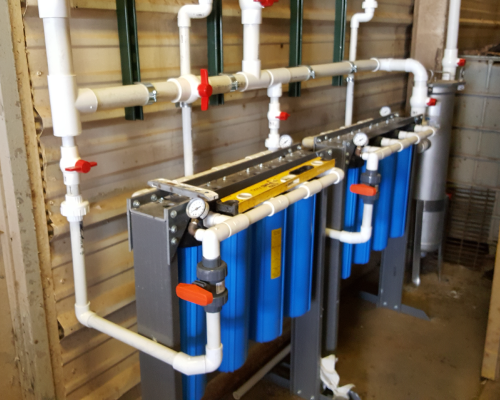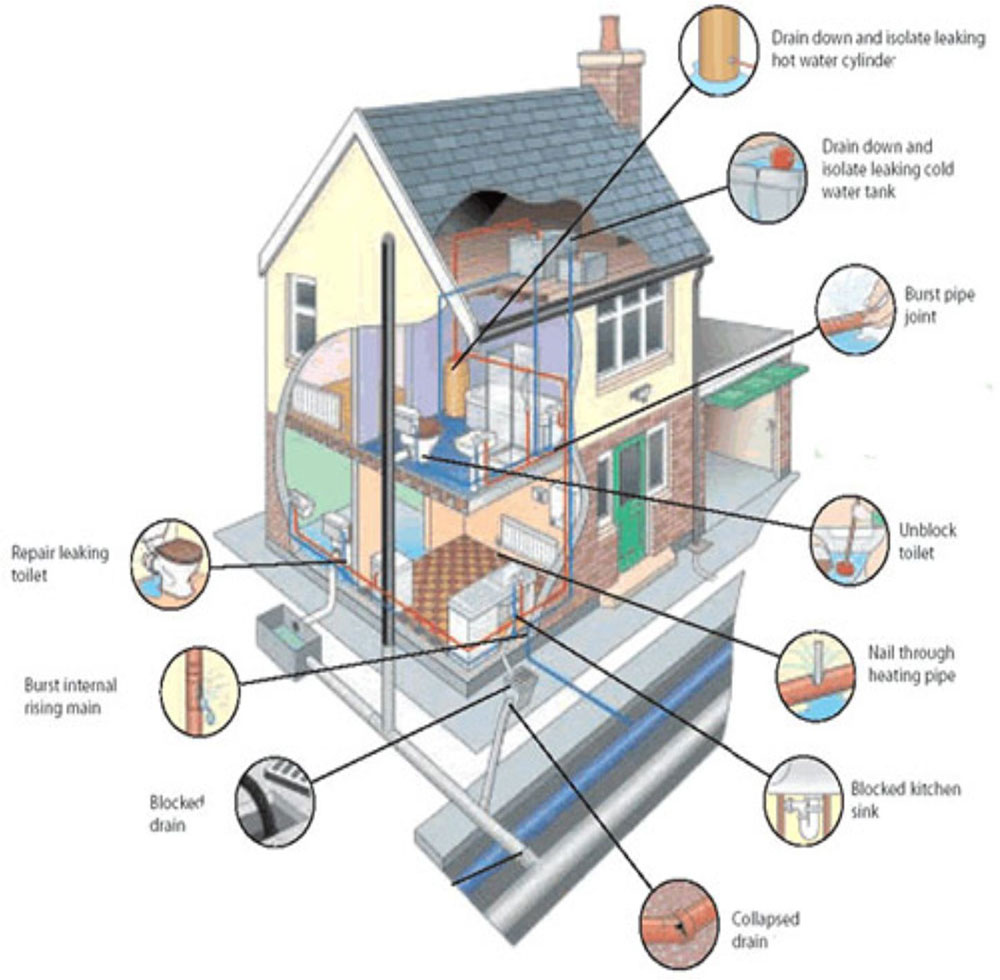We've unearthed this article relating to Anatomy of a House: Understanding the Components below on the web and think it made perfect sense to share it with you on this site.

Comprehending how your home's plumbing system works is essential for every home owner. From supplying tidy water for alcohol consumption, food preparation, and showering to securely eliminating wastewater, a well-kept plumbing system is vital for your household's health and comfort. In this detailed overview, we'll check out the elaborate network that makes up your home's pipes and deal pointers on upkeep, upgrades, and dealing with usual issues.
Intro
Your home's plumbing system is more than simply a network of pipes; it's an intricate system that ensures you have accessibility to clean water and efficient wastewater removal. Recognizing its elements and just how they interact can aid you stop pricey repair services and ensure whatever runs smoothly.
Fundamental Parts of a Pipes System
Pipes and Tubes
At the heart of your plumbing system are the pipelines and tubing that bring water throughout your home. These can be constructed from numerous materials such as copper, PVC, or PEX, each with its benefits in regards to resilience and cost-effectiveness.
Components: Sinks, Toilets, Showers, and so on.
Components like sinks, commodes, showers, and bathtubs are where water is utilized in your house. Understanding just how these fixtures link to the pipes system assists in detecting problems and preparing upgrades.
Shutoffs and Shut-off Factors
Shutoffs manage the circulation of water in your plumbing system. Shut-off shutoffs are crucial during emergency situations or when you need to make repair services, permitting you to isolate parts of the system without interfering with water flow to the entire residence.
Supply Of Water System
Main Water Line
The major water line attaches your home to the municipal supply of water or a private well. It's where water enters your home and is distributed to different fixtures.
Water Meter and Pressure Regulator
The water meter actions your water usage, while a pressure regulatory authority makes sure that water streams at a risk-free pressure throughout your home's plumbing system, stopping damage to pipes and components.
Cold Water vs. Warm water Lines
Comprehending the difference between cold water lines, which supply water directly from the main, and hot water lines, which carry warmed water from the water heater, aids in repairing and planning for upgrades.
Water drainage System
Drain Pipes Water Lines and Traps
Drain pipes lug wastewater away from sinks, showers, and bathrooms to the sewer or sewage-disposal tank. Catches avoid drain gases from entering your home and likewise trap debris that could create blockages.
Air flow Pipelines
Air flow pipelines permit air right into the drainage system, stopping suction that can slow down drain and trigger traps to vacant. Correct air flow is necessary for keeping the honesty of your plumbing system.
Significance of Proper Drainage
Ensuring proper water drainage protects against back-ups and water damages. Consistently cleaning drains and keeping catches can protect against pricey repair services and prolong the life of your plumbing system.
Water Heating Unit
Types of Water Heaters
Water heaters can be tankless or typical tank-style. Tankless heaters warmth water as needed, while storage tanks store warmed water for prompt usage.
Updating Your Plumbing System
Reasons for Upgrading
Updating to water-efficient components or replacing old pipelines can enhance water high quality, decrease water bills, and raise the worth of your home.
Modern Pipes Technologies and Their Advantages
Explore modern technologies like clever leakage detectors, water-saving bathrooms, and energy-efficient water heaters that can conserve cash and minimize environmental influence.
Expense Considerations and ROI
Compute the in advance costs versus lasting cost savings when considering pipes upgrades. Lots of upgrades pay for themselves via lowered energy expenses and fewer repairs.
Exactly How Water Heaters Connect to the Pipes System
Comprehending how hot water heater link to both the cold water supply and hot water circulation lines helps in identifying issues like inadequate hot water or leakages.
Maintenance Tips for Water Heaters
Consistently purging your water heater to get rid of debris, inspecting the temperature setups, and checking for leakages can prolong its lifespan and boost energy effectiveness.
Common Pipes Problems
Leaks and Their Causes
Leaks can take place as a result of aging pipes, loosened installations, or high water pressure. Attending to leaks immediately stops water damage and mold and mildew development.
Clogs and Clogs
Obstructions in drains and bathrooms are frequently caused by purging non-flushable products or a build-up of oil and hair. Utilizing drain screens and bearing in mind what decreases your drains can stop clogs.
Indicators of Plumbing Problems to Expect
Low water stress, slow drains pipes, foul odors, or uncommonly high water costs are indications of possible plumbing troubles that ought to be resolved promptly.
Plumbing Upkeep Tips
Normal Inspections and Checks
Schedule annual plumbing inspections to catch problems early. Seek signs of leaks, deterioration, or mineral buildup in taps and showerheads.
DIY Maintenance Tasks
Basic tasks like cleaning faucet aerators, looking for toilet leaks using color tablets, or protecting revealed pipelines in cold climates can prevent major plumbing problems.
When to Call a Specialist Plumbing Professional
Know when a plumbing issue requires expert competence. Trying complicated fixings without correct understanding can cause even more damages and higher repair work prices.
Tips for Decreasing Water Use
Straightforward behaviors like dealing with leakages immediately, taking much shorter showers, and running full tons of washing and dishes can conserve water and lower your utility expenses.
Eco-Friendly Plumbing Options
Think about lasting pipes products like bamboo for floor covering, which is durable and environment-friendly, or recycled glass for kitchen counters.
Emergency situation Readiness
Actions to Take Throughout a Pipes Emergency situation
Know where your shut-off valves are located and exactly how to shut off the water in case of a ruptured pipe or major leak.
Significance of Having Emergency Get In Touches With Helpful
Maintain call details for regional plumbers or emergency situation services conveniently available for fast reaction during a plumbing situation.
Environmental Influence and Conservation
Water-Saving Components and Home Appliances
Mounting low-flow taps, showerheads, and commodes can considerably reduce water usage without sacrificing efficiency.
DIY Emergency Situation Fixes (When Suitable).
Temporary solutions like using duct tape to patch a dripping pipe or positioning a container under a dripping tap can minimize damages until a specialist plumber shows up.
Conclusion.
Comprehending the makeup of your home's plumbing system encourages you to keep it effectively, saving money and time on repairs. By complying with regular upkeep routines and remaining informed concerning modern pipes innovations, you can ensure your pipes system operates efficiently for many years to come.
The Anatomy of Your Home s Plumbing System
Understanding the anatomy of your home s plumbing system is essential for any homeowner. It not only helps in identifying potential issues but also facilitates effective communication with professionals when repairs or upgrades are needed. Your home s plumbing system is more than just pipes and faucets; it s a complex network that ensures the efficient and hygienic flow of water in and out of your house. In this blog, we ll dissect the crucial components of your home s plumbing system. For those in Antelope Valley, Brock Plumbing is your trusted partner for all your plumbing needs, ensuring your system functions smoothly and efficiently.
Water Supply System
Main Water Line: This is where your home s plumbing system begins. The main water line connects your home to the public water supply or a private well. Pipes and Shut-off Valves: Pipes distribute water throughout your home. Shut-off valves are crucial for controlling the flow of water and making repairs without shutting off the entire system. Drainage System
Drain Pipes: These pipes carry waste and water away from sinks, toilets, and showers. Vents: Vents allow sewer gases to escape and help maintain proper pressure in the drainage pipes, ensuring efficient flow of wastewater. Traps: Every fixture has a trap, a U-shaped pipe that holds water and prevents sewer gases from entering your home. The most common is the P-trap under sinks. Fixtures and Appliances
Fixtures and appliances are the most interacted with parts of your plumbing system. They include sinks, toilets, showers, dishwashers, and washing machines. Each fixture and appliance has its own supply and drainage connection, ensuring they receive clean water and can dispose of wastewater effectively.
Water Heating System
Your water heater is a crucial component, providing hot water to various fixtures and appliances in your home. It can be tank-based or tankless, with each type having its own set of advantages and maintenance requirements. Regular maintenance is essential to ensure efficient operation and extend the lifespan of the unit.
Sump Pump
In areas prone to flooding or with high water tables, a sump pump is an essential part of the plumbing system. It s installed in the lowest part of your basement or crawlspace and pumps out water that accumulates, preventing flooding and protecting your home from water damage.
Septic System
Homes that are not connected to a municipal sewer system have a septic system and an underground wastewater treatment structure. Understanding how to maintain your septic system is crucial to prevent backups, odors, and early system failure.
Conclusion
Your home s plumbing system is a complex and essential network, ensuring the efficient and hygienic flow of water in and out of your property. Understanding its key components helps in maintaining it properly and identifying issues before they escalate into major problems. For residents in Antelope Valley, Brock Plumbing is dedicated to providing top-notch services, ensuring that every part of your plumbing system is in perfect working order. Trust our team of professionals to handle all your plumbing needs, ensuring your home remains comfortable, safe, and well-maintained.
https://brockplumbinganddrains.com/blog/the-anatomy-of-your-homes-plumbing-system/

I stumbled upon that post on Understanding Your Home's Plumbing Anatomy when doing a lookup on the search engines. Do you know about somebody who is occupied with the topic? Be sure share it. Thanks a lot for your time. Don't forget to check up our site back soon.
View